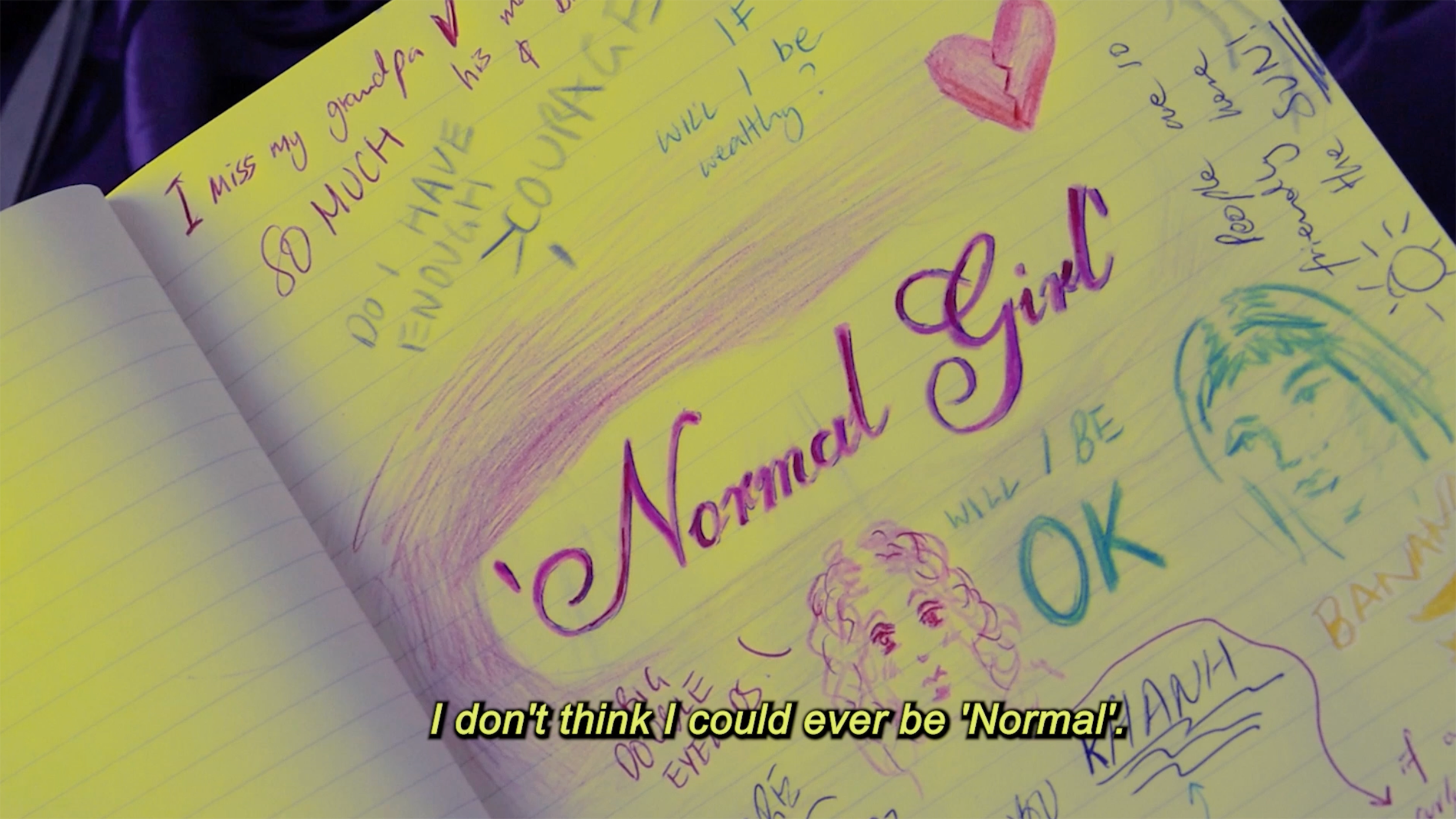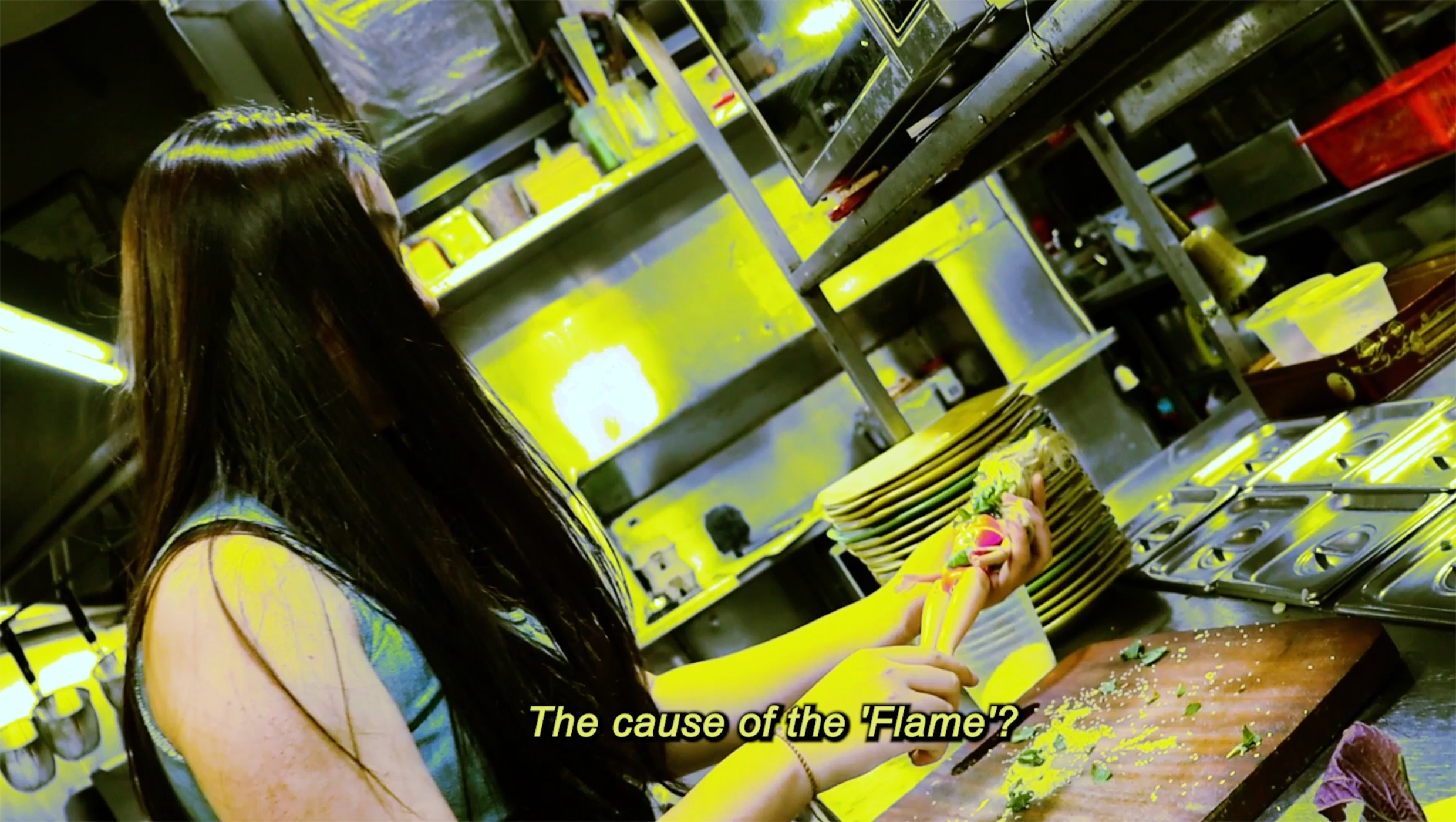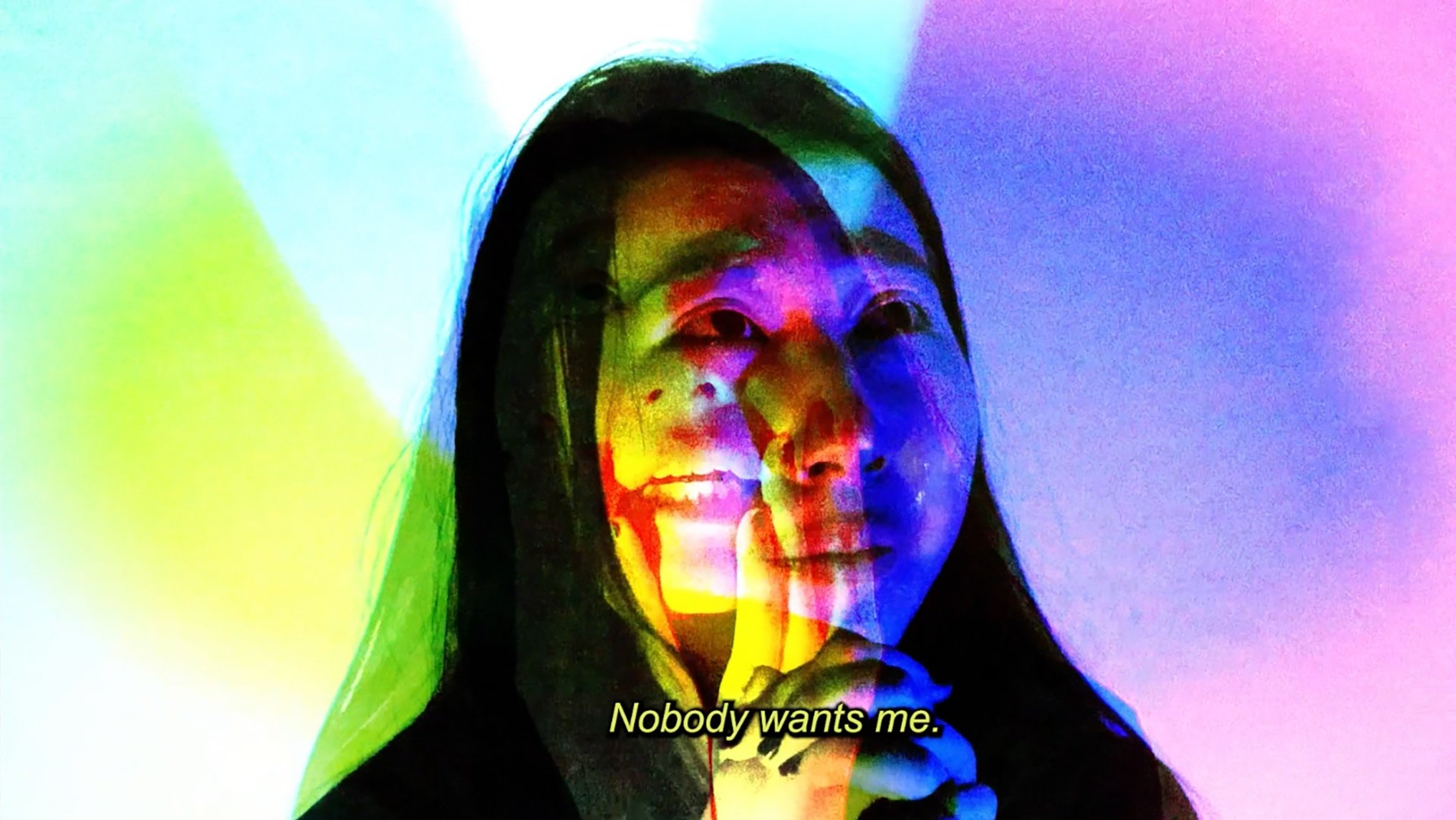
Normal Girl
Kimmy Nguyen Thoi (she/her)
Emerging filmmaker and student of the Australian Film Television and Radio School from Naarm, Kimmy Nguyen Thoi (she/her), aims to tell authentic stories that draw from her experiences of navigating cultural identity. Kimmy spoke to Demure about her short film ‘Normal Girl’ – a deeply moving and intense narrative that aims to unveil the complex experience of coming-of-age.
Interviewed by Sarah Walliss (she/her)
Normality is a contradictory concept – it restricts more than it comforts. Kimmy Nguyen Thoi wrote and directed the short film, ‘Normal Girl’ (2023), a coming-of-age story that grapples with the concepts of cultural ambiguity and unnerving self-perception. As her directorial debut, she encapsulates the testing journey endured by individuals struggling to satisfy typical expectations of the ‘perfect, normal girl’.
Through non-diegetic narration and eccentric cinematography style, the viewer is unsettled as they are thrust into the mind of a teenager, who is not only negotiating ‘coming-of-age’ but also her experiences as a Vietnamese-Australian refugee.
When I was writing the screenplay for Normal Girl, I reflected on how my mother and I have actually undergone quite different adolescent periods. She arrived in Australia as a refugee, and I had the privilege of being born here. We had very different upbringings…Yet despite that, we've still undergone many experiences that align similarly and intertwine us closer together when we talk about it. I think the main experience or theme that flows between us is peers placing linearised stereotypes on what an Asian woman should be like or what an Asian person should be. This leads to a certain stigma and prejudice, conscious or unconscious, of people who are Asian. She dealt with that growing up and so did I.
Normal Girl taps into the experience that Kimmy’s mum felt growing up: a sense of guilt for not upholding traditional expectations and feeling ‘not normal’. Similarly, Normal Girl is also informed by Kimmy’s feelings of guilt towards erasing her Vietnamese background out of her desire to fit in with ‘Anglocentric’ culture.
Despite my efforts, I never felt Anglo enough, and I never felt Asian enough. I always felt like I was in an interstitial space where I didn't fit into the term ‘normal’. This is how the screenplay became so personal. It came together for the whole film because I drew from the contrast and the consistencies within this universal experience of identity and normality crisis, which anyone undergoes, no matter their age, setting, cultural background, ethnicity.
One of the most prominent challenges in creating Normal Girl for Kimmy was facing her own conflicting perception of the project.
The main thing I endeavour to preface is that my creative work is not representative of all individuals and their personal experience with cultural identity or coming-of-age. It's not an all-encompassing artefact that all people may relate to let alone agree with, because everybody has such varying lenses and perspectives of broad topics, specifically, certain conversations related to social or cultural discourse or identity … It's an ongoing, shifting conversation. A major challenge is how I have perceived my work and wondered: Is this representing something that people might not like or understand?
There is no normal; however, as Normal Girl shows, people often strive to achieve it. As the protagonist faces social uncertainty and a sense of loneliness, the viewer is faced with a conundrum: the feeling of being torn between two identities. But as the film closes we are left with a tender sense of hope. The protagonist embraces her uniqueness: ‘But I think if I like myself then that’s a good thing’.
… Normality is a very contradictory concept, and it actually restricts more than it comforts.
That was the main message I wanted the film to convey. It encapsulates both my mum and my coming-of-age and you see that mirroring scale of both of our experiences, being a little bit different but also aligning similarly. To me that is coming-of-age. A lot of people undergo similar experiences, through different settings, cultures, times, and places, but we’re always ever-evolving and shifting.
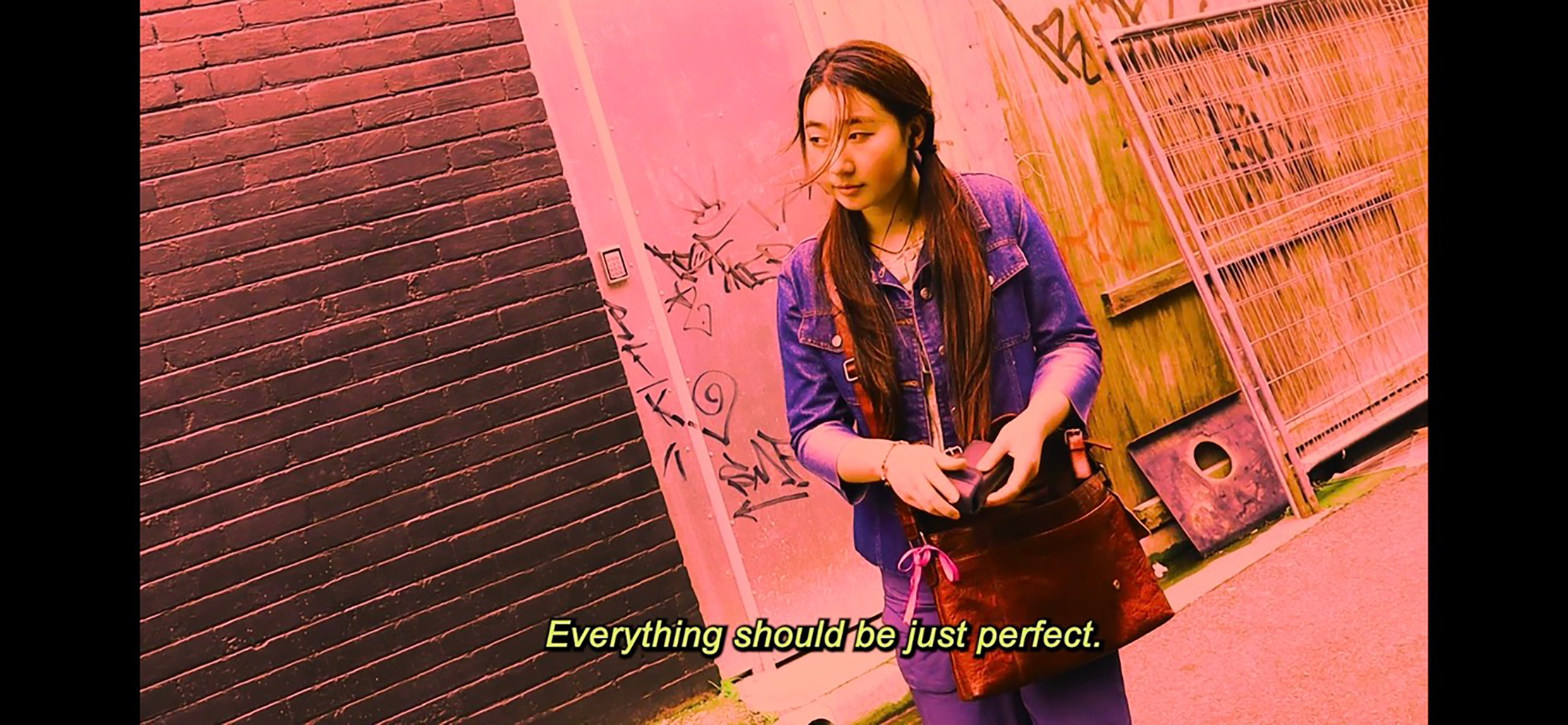
Coming-of-age stories can be traditionally linear and often focus on a loss of innocence and growth from childhood into maturity. Normal Girl also centres on growth, but not in a simplistic trajectory that the viewer is used to.
The viewer is disturbed by unsettling music and shots. This sets them up for the jarring emotions felt as the protagonist reflects upon her own self and the new life she is immersed within. Kimmy wanted to subvert the coming-of-age form so it would more accurately reflect her and her mum’s coming-of-age experiences, which were not specifically complete, but rather unceasing and fluid states.
In the coming-of-age experience, one can feel completely at peace or satisfied with their matured state of growth, but then yet severely vulnerable and underdeveloped in their self-perception just a few moments later. For me, coming-of-age is an ongoing, ever-evolving, and recursive process, rather than just a simple predictable process – innocence, adaptation, growth – like most conventional stories that are taught to us … Coming of age is never ending … It’s terrifying, butalso very beautiful.
Kimmy produced the film for her Year 12 project, working together with her friends as cast members and crew. She filmed Normal Girl at school, home and at the Vietnamese restaurant called Thanh Ha 2. The production of the film is woven with the notions of duality, duplexity and mirroring parallels.
… I knew that I wanted to produce a work that resonated with cultural identity themes; specifically the concurrent experience of guilt and appreciation towards the self. I became a bit obsessed with the theoretical notions of duplexity and mirroring, then eventually needled this into the actual construction of my film itself.
… I directed, produced and DoP’d the film, whilst my mother narrated the story in Vietnamese.
Through the editing and camera techniques, Kimmy intended for the film to unsettle viewers, whilst also making them feel a close and intimate relationship to the onscreen protagonist. Kimmy drew inspiration from an array of filmmakers and movements, in particular French New Wave cinema.
The handheld camera work and one-takes are inspired by the works of Jean-Luc Godard, Wong Kar-wai and Catherine Hardwicke, who are known for using hand-held, cinéma vérité techniques. In terms of the eccentric production design, colouring and screenplay, Kimmy drew from Vietnamese filmmaker Trần Anh Hùng; Czech filmmaker Věra Chytilová; and others like Domee Shi and Shunji Iwai.
… After looking through my mum’s old film photographs from the 90s, I appreciated how clunky and off-centre her house decoration was (traditional Vietnamese dining set ups, karaoke collection, incense, restaurant utensils or rice cookers). Films like Everything Everywhere All At Once (Daniel Kwan and Daniel Scheinert, 2022) inspired me to embellish the simple narrative with a nearly maximalist, hyper-surreal colour palette. There’s my obsession with antithetical duality again; I wanted to accentuate this so the work acts as a recursive interrogation between meek familiarity and amplified alienation of the self throughout coming-of-age … which can be full of exhaustion and loneliness.
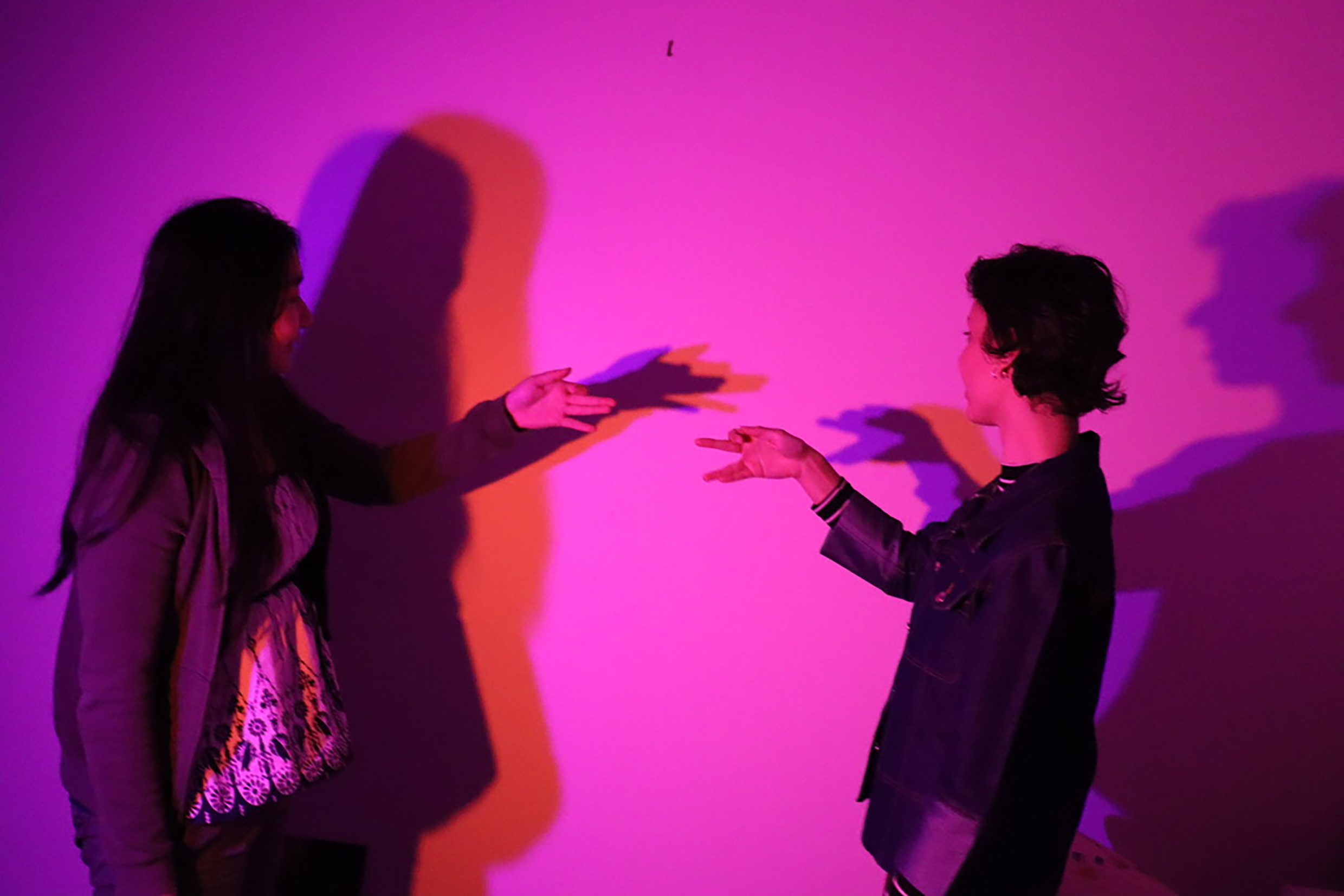
Since childhood, Kimmy’s desire to navigate life manifested through art: writing, visual image, performance. Earlier on, she often drafted stories and comics on paper. Then at age nine, she uncovered her love for screen production and visual narrative.
I discovered I could unveil a creative work which mirrored real life and real people, through an amalgamation of camerawork, live performance and post-production editing – after its initial sketches or words on draft paper.
… I think a lot of my fascination with filmmaking and photography stems from this desire to construct reality with real life objects, whilst communicating intangible human emotions, that arise when we attempt to make sense of visceral experience.
Towards the end of primary school, she started attending film workshops at ACMI. Here she realised that filmmaking is a highly collaborative process. However, she also began to fear creating stories through artistic expression and film.
In adolescence, I got a bit self-conscious about my love for that. I shied away from it for a little bit. So creating Normal Girl in my final year of high school was sort of one of the most intrinsic steps to coming to terms with my actual passion for filmmaking.
… Normal Girl had been born out of my decision to create an absurd visual work that would communicate a touching narrative; the nature of individual ‘coming-of-age’, which is a labyrinthine process … often multifarious and contradictory for the growing person.
Despite some of the challenges she has faced, Kimmy ultimately looks back on the project with love. The film deals with topics of normality and cultural identity, but it’s also an ode to Kimmy’s adolescent friendships and her own ‘coming-of-age’ challenges of letting go of self-doubt and fear.
It's a celebration of all my talented best friends in our final year of high school. We had such a blast making it and spending time together. I will always have my film as a snapshot of that time and my younger high school self. It's also an important stepping stone in my life to creating matured and nuanced works about different topics in the future. I'm very grateful that I had the choice, privilege and opportunity to pursue that.
Kimmy encourages emerging filmmakers to do what they are passionate about; to take that risk to produce work that will not only be memorable but inspire other people to step out of their shell and bring light to a diverse palate of unrepresented stories.
… Artists such as Natalie Tran left such an impact on me as I grew into my love for storytelling and screen production. I’d also recommend the short film ‘Lucky Fish’, directed by Emily May Jampel, memoir ‘Crying in H Mart’, by Michelle Zauner and novel ‘Yellowface’, by R. F. Kuang, which are all incredible works.
I always had a lot of fear in accepting that I wanted to create; that I’d be completely wrong, or not good enough. But the more that you inspire other people to create, the more that they’ll create for others.
Strive to inspire others while remaining true to yourself and remaining true to what you love. Do not be afraid to feel or fail. The stories that you make may not necessarily change the world right now, but it’ll help others (and yourself) make sense of it, just a little bit better.
Normal Girl is currently unavailable to view as has been selected for inclusion in Setting Sun Film Festival 2024!
